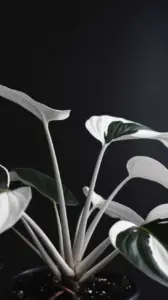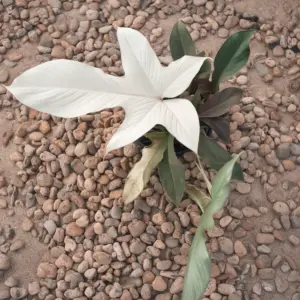Biological Features of Strelitzia Nicolai
Strelitzia Nicolai, commonly known as the giant bird of paradise, is a striking perennial plant. It belongs to the family Strelitziaceae. This plant is native to South Africa and is known for its impressive height, often reaching up to 30 feet. The leaves are large, paddle-shaped, and can measure up to 6 feet in length. They grow in a fan-like arrangement, providing a tropical ambiance.
Flowers and Growth Habit
The flowers of Strelitzia Nicolai are visually captivating. They emerge from the center of the plant and resemble a bird in flight. Each flower is made up of vibrant blue and orange petals, which attract various pollinators, primarily birds and insects. The flowering period typically occurs from late winter to early spring.
Growing Conditions
Strelitzia Nicolai thrives best in well-draining soil and requires a sunny location. It is moderately drought tolerant once established, but regular watering enhances growth and flowering. Fertilization with a balanced fertilizer in the growing season promotes healthy development.
| Feature | Description |
|---|---|
| Height | Up to 30 feet |
| Leaf Size | Up to 6 feet long |
| Flower Colors | Blue and Orange |
| Native Region | South Africa |
| Water Requirements | Moderately drought tolerant |
In summary, Strelitzia Nicolai is not just a visually appealing plant, but also one that requires specific growing conditions to flourish. Understanding its biological features enriches the gardening experience.
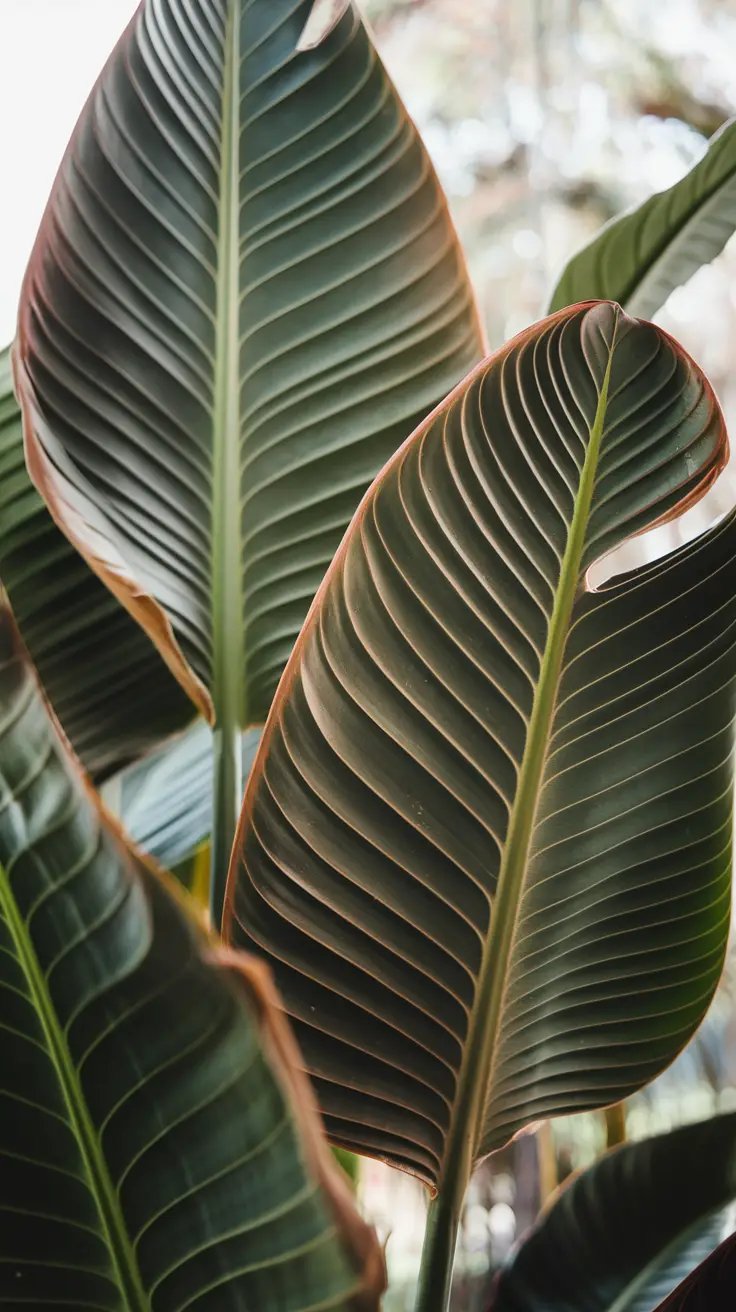
History and Cultural Significance
Strelitzia Nicolai, also known as the giant bird of paradise, boasts a rich history. Native to South Africa, this stunning plant was first discovered in the tropical regions of the country. Its striking appearance has made it a popular choice in gardens and landscapes around the world.
Historical Background
The Strelitzia family derives its name from the duchy of Mecklenburg-Strelitz, Germany. This plant was named in honor of Queen Charlotte, a member of the house of Mecklenburg-Strelitz. Its introduction to Europe occurred in the 18th century, captivating horticulturists with its unique flowers and foliage.
Cultural Importance
In South Africa, the Strelitzia Nicolai is often associated with good fortune. Its impressive height and magnificent blooms symbolize prosperity, vitality, and resilience. Because of these meanings, it frequently features in cultural celebrations and ceremonies.
Uses in Modern Landscapes
Today, Strelitzia Nicolai is favored in both residential and commercial landscapes. Many people appreciate its ability to create dramatic focal points in gardens. Additionally, it serves well as a tropical indoor plant due to its striking leaves and flowers.
Interesting Facts
- The plant can grow up to 30 feet tall in ideal conditions.
- Birds, particularly sunbirds, are attracted to its flowers.
- It requires plenty of sunlight and well-drained soil to thrive.
- Strelitzia Nicolai can live for several decades with proper care.
Through the various cultural significances and horticultural uses, Strelitzia Nicolai continues to be a beloved species worldwide.
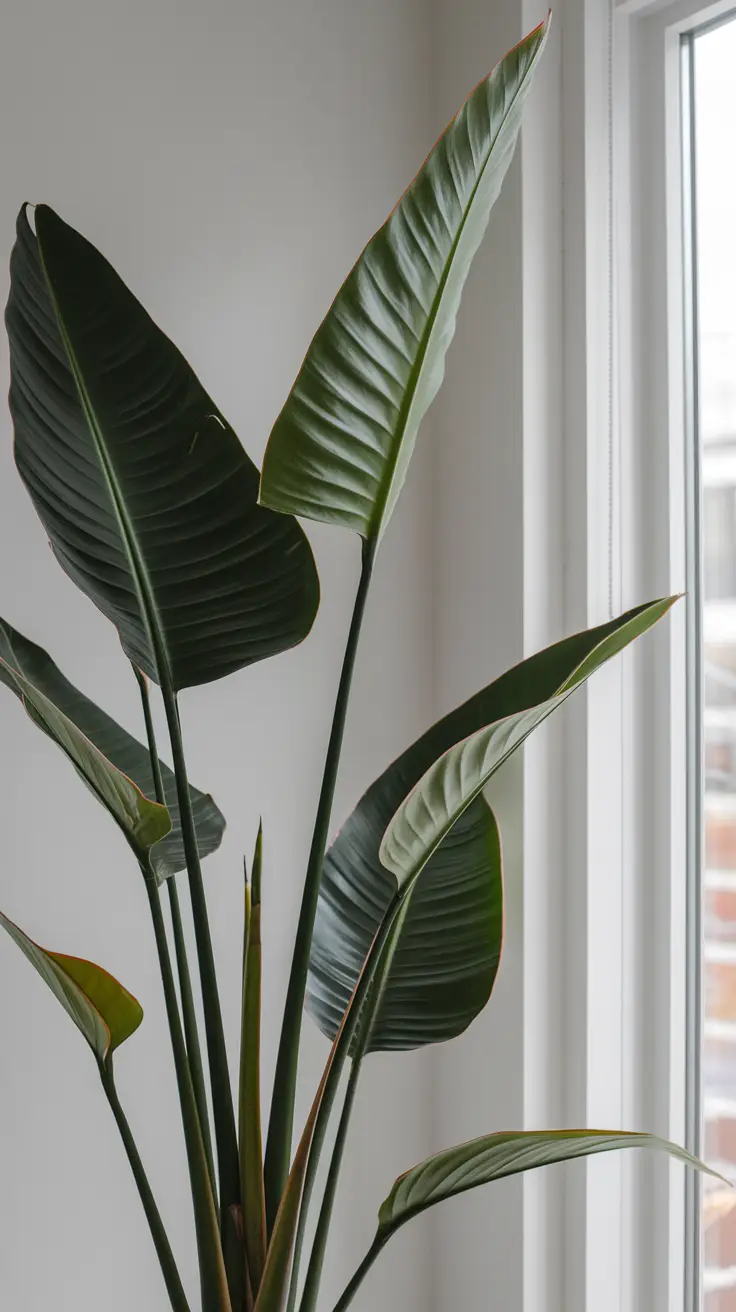
Ideal Growing Conditions for Strelitzia Nicolai
The Strelitzia Nicolai, commonly known as the giant bird of paradise, thrives in specific conditions. This plant prefers warm temperatures and bright, indirect sunlight. Therefore, finding the right spot in your home or garden is crucial for its health.
Temperature and Light
Strelitzia Nicolai flourishes in temperatures between 65°F to 80°F (18°C to 27°C). It can tolerate slightly cooler conditions but should not be exposed to frost. Too much cold will stunt its growth. Adequate sunlight is vital; this plant enjoys bright, indirect light. However, direct sun can scorch its leaves. So, consider locations near east-facing windows for optimal exposure.
Soil and Watering
Well-draining soil is essential for the Strelitzia Nicolai. A mixture of potting soil, peat, and perlite works well. This combination prevents root rot while retaining some moisture. Regular watering is important, especially during the growing season. Water this plant thoroughly, allowing the top inch of soil to dry between waterings. During winter months, reduce the frequency.
Humidity and Fertilization
Humidity levels above 50% benefit the Strelitzia Nicolai. In dry climates, consider misting the leaves or using a pebble tray with water. Fertilizing enhances growth; use a balanced, water-soluble fertilizer every four to six weeks during the spring and summer months. Reduce fertilization in the fall and winter when the plant is dormant.
Table of Ideal Growing Conditions
| Condition | Ideal Range |
|---|---|
| Temperature | 65°F – 80°F (18°C – 27°C) |
| Light | Bright, indirect sunlight |
| Soil | Well-draining mix (potting soil, peat, perlite) |
| Watering | Thoroughly, allowing soil to dry between |
| Humidity | Above 50% |
| Fertilization | Balanced fertilizer every 4-6 weeks (spring/summer) |
By following these guidelines, your Strelitzia Nicolai will thrive and produce stunning foliage.
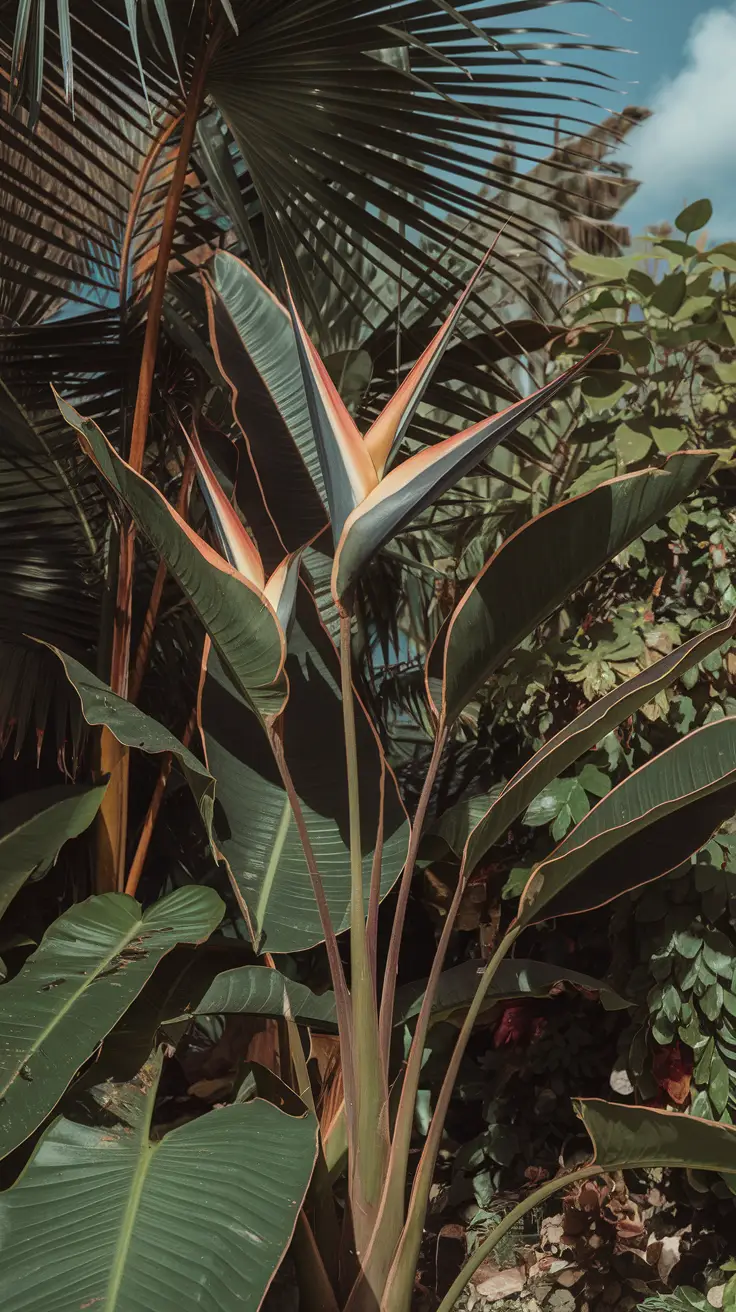
Plant Care and Maintenance
Strelitzia Nicolai, commonly known as the giant bird of paradise, requires specific care to thrive. Proper care ensures vibrant foliage and healthy growth. Begin by providing your plant with bright, indirect light. While it can tolerate some direct sunlight, too much can scorch its leaves. If your Strelitzia starts turning yellow, it may be receiving too much light.
Watering is crucial for this plant’s health. During the growing season, which typically runs from spring to summer, keep the soil consistently moist. However, do not let it sit in water, as this can lead to root rot. In the winter, reduce watering slightly, allowing the soil to dry out more between sessions.
Soil and Fertilization
Use a well-draining potting mix for your Strelitzia Nicolai. A combination of peat, perlite, and potting soil works best. This mix promotes healthy root growth and prevents waterlogging. Fertilize the plant every 2-4 weeks during the growing season with a balanced liquid fertilizer. This frequency will help maintain nutrient levels and encourage robust growth.
Humidity and Temperature
Strelitzia prefers a humid environment. Aim for humidity levels above 50%. You can increase humidity by misting the leaves or placing a humidifier nearby. Additionally, keep the plant in a warm spot, ideally between 65°F to 75°F. Avoid exposing your plant to cold drafts or sudden temperature changes.
Pest Management
Be vigilant for common pests like spider mites and aphids. Regularly inspect the undersides of leaves. If you see any pests, treat them promptly with insecticidal soap or neem oil. Keeping the leaves clean helps prevent infestations and promotes overall health.
Pruning and Repotting
Regular pruning is essential to maintain the shape and health of your Strelitzia. Remove any dead or damaged leaves to encourage new growth. Repot the plant every 2-3 years to provide fresh soil. When repotting, choose a pot that is one size larger, ensuring proper drainage.
Summary of Care Tips
- Provide bright, indirect light.
- Water thoroughly but avoid waterlogging.
- Use a well-draining soil mix.
- Maintain humidity above 50%.
- Monitor for pests and treat quickly.
- Prune dead leaves regularly.
- Repot every 2-3 years.
Following these care tips will help your Strelitzia Nicolai flourish, showcasing its stunning leaves and enhancing your indoor space.
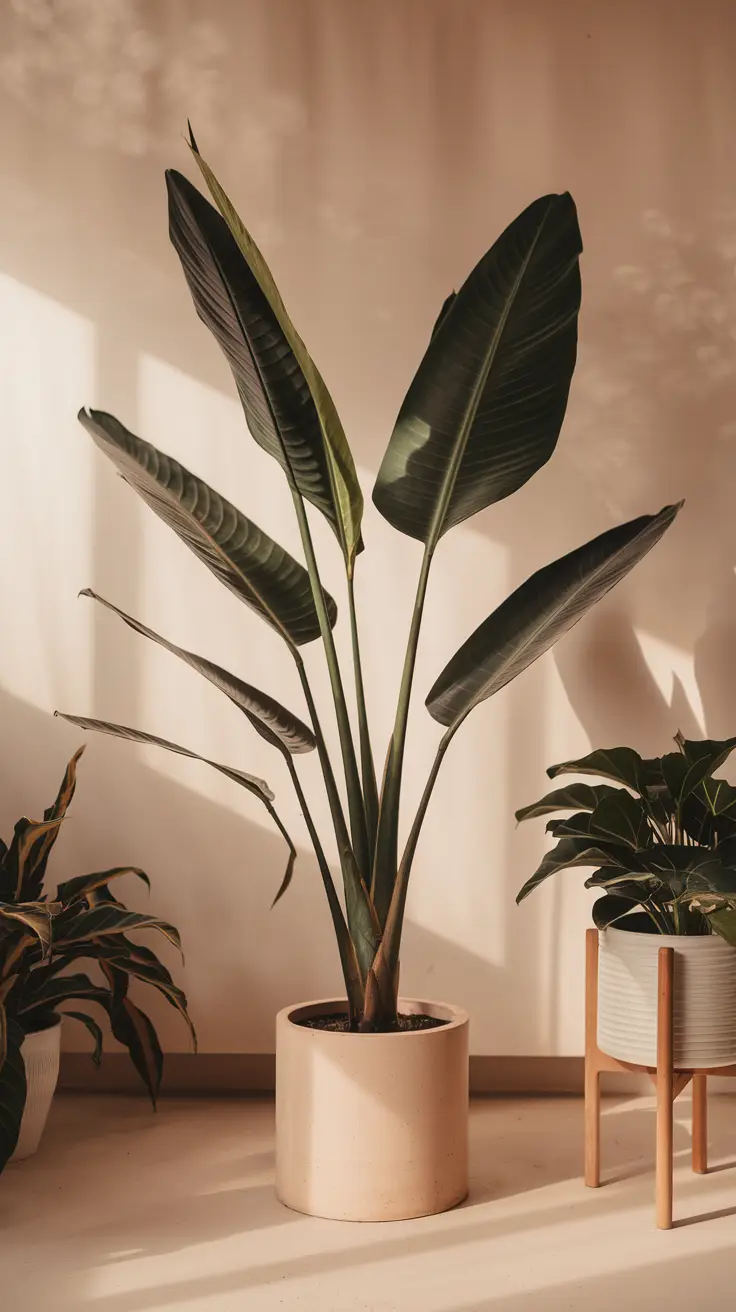
Propagation Techniques for Strelitzia Nicolai
Strelitzia Nicolai, also known as the giant bird of paradise, can be propagated through various methods. The most common techniques include division, seed sowing, and offsets. These methods are effective and encourage healthy growth. Knowing the best techniques for propagation will help you expand your collection of this stunning plant.
Propagation by Division
Division is a straightforward method for propagating Strelitzia Nicolai. It involves carefully separating a mature plant into smaller sections, each with roots. First, choose a mature plant with multiple stems. Next, use a sharp, clean spade to dig up the plant. Gently shake off excess soil, revealing the root system.
Once the roots are exposed, identify the natural divisions. These should have their roots intact. Then, use the spade to cut through the roots, ensuring each division has at least a few leaves. Replant each division in individual pots with well-draining soil. Water them lightly and place them in a warm, bright location.
Propagation by Seed
Propagation by seed is another method for Strelitzia Nicolai. However, it requires more time and patience. Start by obtaining fresh seeds from a reliable source. Before planting, soak the seeds in water for 24 hours to enhance germination. Prepare a seed-starting mix and fill small pots with it.
Next, plant the seeds about half an inch deep in the soil. Water them gently, ensuring the soil remains moist but not soggy. Cover the pots with plastic wrap to maintain humidity. Once the seeds germinate, remove the plastic wrap and care for the seedlings as they grow.
Lastly, offsets can also be used for propagation. Whenever you notice small plants growing near the base of a mature Strelitzia Nicolai, you can separate them. Like division, ensure each offset has enough roots for successful transplantation. This method is quick and effective, making it a favorite among gardeners.
Common Problems and Solutions
Strelitzia Nicolai, also known as the giant bird of paradise, can encounter several common issues. Identifying these problems early can help maintain a healthy plant. Below are common problems and effective solutions.
Pest Infestation
Pests such as spider mites and mealybugs can affect Strelitzia Nicolai. You may notice webbing or small white masses on the foliage. For control, use insecticidal soap or neem oil. Ensure to thoroughly spray the affected areas. Regularly inspect your plant for pests.
- Check the undersides of leaves for early signs.
- Isolate infested plants to prevent spreading.
Leaf Browning
Leaf browning can indicate several issues. Overwatering or underwatering often causes this problem. Assess the moisture level of the soil. If it appears soggy, reduce watering frequency. Conversely, if the soil is dry, increase watering.
Yellowing Leaves
Yellowing leaves can be a sign of nutrient deficiency. Strelitzia Nicolai flourishes with adequate nitrogen levels. Fertilize with a balanced, water-soluble fertilizer during the growing season. Additionally, ensure proper drainage in the pot to prevent root rot.
Environmental Conditions
Strelitzia Nicolai prefers bright, indirect light. Insufficient light can stunt its growth. Move the plant closer to a light source. However, avoid direct sunlight, as it can scorch the leaves. Maintain indoor temperatures between 65°F and 80°F for optimal growth.
| Problem | Indication | Solution |
|---|---|---|
| Pest Infestation | Webbing, small masses | Insecticidal soap, neem oil |
| Leaf Browning | Dry or soggy soil | Adjust watering frequency |
| Yellowing Leaves | Discoloration, weak growth | Fertilize, improve drainage |
| Insufficient Light | Weak growth | Relocate to brighter spot |
By addressing these issues swiftly, you can keep your Strelitzia Nicolai vibrant and healthy. Regular care and observation can help prevent many common problems.
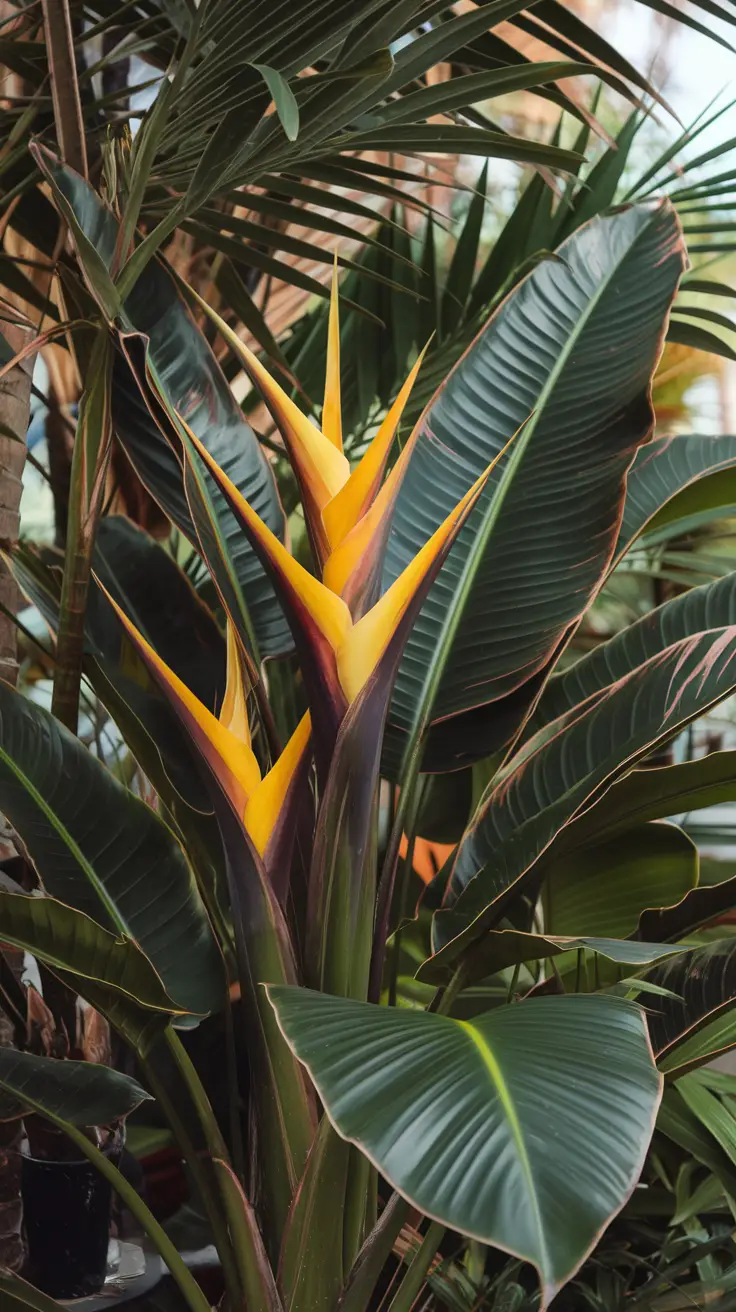
Seasonal Care Adjustments
Strelitzia Nicolai requires specific care adjustments as the seasons change. During spring and summer, when the growth is active, it enjoys a balance of moisture and light. Ensure that the soil remains slightly moist but never waterlogged. It is an excellent practice to water less frequently in fall, as the plant enters a dormant period.
Winter Care
In winter, reduce watering further to allow the plant to rest. Strelitzia Nicolai thrives in bright, indirect light. However, during the darker months, ensure it still receives sufficient sunlight. If possible, rotate the plant regularly to promote even growth.
- Spring: Increase watering and light exposure.
- Summer: Maintain consistent moisture levels.
- Fall: Gradually reduce watering.
- Winter: Minimize watering and ensure ample light.
By making these seasonal adjustments, your Strelitzia Nicolai can flourish throughout the year. Monitoring the plant’s reaction helps ensure optimal growth and health.
Microclimate Setup Tips
Creating the ideal microclimate for your Strelitzia Nicolai is essential for its growth. This plant thrives in bright, indirect light, so position it near a window. However, protect it from direct sunlight, as this can scorch its leaves. Additionally, consider the humidity levels in your environment.
Humidity and Temperature
Strelitzia Nicolai prefers a humid atmosphere, ideally 60% or higher. To achieve this, you can:
- Use a humidifier in the room.
- Group plants together to increase humidity.
- Place a tray with water and pebbles under the pot.
- Regularly mist the leaves, though avoid excessive moisture.
Temperature influences how well your Strelitzia grows. Aim for a range between 65°F and 80°F (18°C to 27°C). Sudden temperature fluctuations can stress the plant.
Air Circulation
Good air circulation is also key for your Strelitzia Nicolai. Stagnant air can promote pests like spider mites. You can enhance air circulation by:
- Positioning a fan nearby, but not directly on the plant.
- Avoiding crowded spaces where airflow is restricted.
By implementing these setup tips, you can create a thriving microclimate. Remember, each Strelitzia Nicolai may have unique preferences, so adjust accordingly based on its response.
Frequently Asked Questions
Strelitzia Nicolai, commonly known as the giant bird of paradise, is a popular plant due to its stunning foliage and unique appearance. Many potential owners have questions about caring for this tropical beauty. Here, we address some of the most frequently asked questions.
What are the light requirements for Strelitzia Nicolai?
This plant thrives in bright, indirect sunlight. However, it can also tolerate partial shade. Direct sunlight can scorch its leaves, so be cautious about placement.
How often should I water Strelitzia Nicolai?
Water the plant when the top inch of soil feels dry. Typically, this means watering once a week, but adjust based on humidity and temperature. Overwatering can lead to root rot, so ensure proper drainage.
What temperature is best for Strelitzia Nicolai?
Strelitzia Nicolai prefers temperatures between 65°F and 75°F (18°C to 24°C). Protect the plant from frost, as it can damage the leaves and ultimately harm the plant.
Is Strelitzia Nicolai pet-friendly?
Yes, Strelitzia Nicolai is considered non-toxic to pets. However, it’s always wise to monitor pets around houseplants, as chewing on leaves might cause digestive upset.
How often should I fertilize?
During the growing season, fertilize Strelitzia Nicolai every 4-6 weeks. Use a balanced liquid fertilizer to promote healthy growth and foliage.
Summary and Recommendations
Strelitzia Nicolai, commonly known as the giant bird of paradise, is a stunning tropical plant. This species features large, paddle-like leaves that create a bold statement in any space. It thrives best in bright, indirect sunlight and requires regular watering, ensuring the soil remains moist but not waterlogged.
For optimal growth, consider using a rich potting mix. Fertilizing during the growing season can also promote healthy development. Be mindful of pests, such as spider mites and aphids, which can affect the plant’s health. Regularly inspecting the leaves can help you catch these issues early.
In summary, Strelitzia Nicolai is an impressive choice for plant enthusiasts. Its beautiful foliage and striking appearance make it a favorite among indoor plant lovers. Ensure it receives adequate care to enjoy its many benefits.



